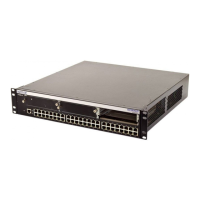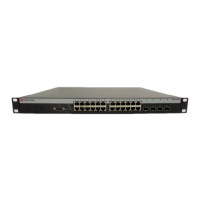Matrix E1 Series (1G694-13) Configuration Guide 7-1
7
Port Priority Configuration
This chapter describes the Port Priority set of commands and how to use them.
7.1 PORT PRIORITY CONFIGURATION SUMMARY
This device supports Class of Service (CoS), which allows you to assign mission-critical data a
higher priority through the device by delaying less critical traffic during periods of congestion. The
higher priority traffic through the device is serviced first before lower priority traffic. The Class of
Service capability of the device is implemented by a priority queueing mechanism. Class of Service
is based on the IEEE 802.1D (802.1p) standard specification, and allows you to define eight
priorities (0 through 7) and four transmit queues (0-3) of traffic for each port:
A priority 0 through 7 can be set on each port, with 0 being the lowest priority. A port receiving a
frame without priority information in its tag header is assigned a priority according to the default
priority setting on the port. For example, if the priority of a port is set to 5, the frames received
through that port without a priority indicated in their tag header are classified as a priority 5 and
transmitted according to that priority.
7.1.1 Weighted Round Robin (WRR) Priority Queueing
The frames are emptied out of the four queues with a weighted priority expressed in a percentage
of total traffic for each queue. The queues are served in round-robin order with a configurable
weight for each queue. The four queue settings must add up to 100 percent. This guarantees
minimum bandwidth for each queue in all cases, and can ensure that no queue reaches more than a
predetermined proportion of the overall capacity (Guarantee Maximum Bandwidth) under stress.

